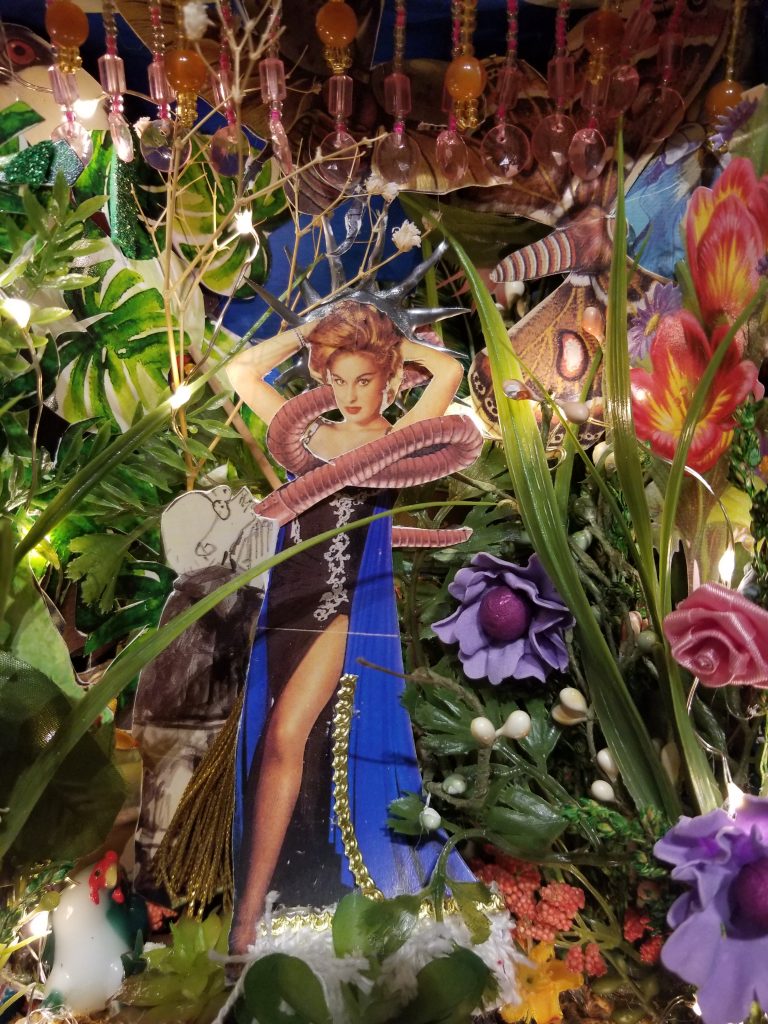
The Newport Annual was one of the first events I reported first-person, thereby unraveling that j-school dictate: Don’t become the story.
Writing about art is palpably different. Can one really be a ghost, a floating objective thought, when writing about things that invoke feeling and sensation?
This year, trying to think of an exciting frame for coverage of the Annual’s 31st iteration, I decided to enlist two people with a seeming abundance of opinions: My parents.
Mom has seen every Annual since 2015, but Dad was a newbie. Turns out we weren’t the only family in attendance; several bloodlines made it into the 85 artworks that comprise this year’s show. Eleanor Sabin showed along with her father Robert. Sam Heydt was also joined by her father, the watercolorist William Heydt. Then there were three Nesbitts: Brothers Alexander and Rupert, and their mother Ilse Buchert Nesbitt.
The entire Annual has a whiff of pedigree and heritage, most clearly in its stylistic debts to the past. Juror Crawford Alexander Mann III, curator of prints and drawings at the Smithsonian American Art Museum, assembled what is the probably the most conservative and traditional Annual I’ve seen.
Mann’s comments on the winning entries suggested his aesthetic priorities. One winner exhibited “unbelievable control,” another “perfect control,” a sculpture was “masterfully executed.” Forgive the linguistic hair splitting, but why this emphasis on control, command, execution? Predictability tends to drain visual art of its poetry and emotion. Thus the collective visual language of Mann’s selections felt safe. Very safe.
But more importantly: What did Mom and Pop think? I met up with them after my initial, observational sweep of the show. Dad had one favorite thus far, something with a lot of green.
“Wait,” I said. “I know exactly which one you’re talking about,” and I pulled up a photo I had taken of Marjorie Hellman’s “Somnambulant 7.” Dad nodded, content. We’re both fond of green, which Hellman elicits with speed, electricity and power in her sleek, acrylic-on-aluminum abstraction.
Now my dad can’t swim. And he’s doesn’t have a dog. But he com- mended Kay Ritter’s first-place painting, “Tide Pool Float, Long Nook Beach,” which includes both. Something about the composed serenity of the scene appealed to him. “Well deserved,” Dad said.
I waited for Mom’s occasionally sarcastic commentary, but she was pretty quiet this year. Maybe she’s getting jaded. On seeing Rupert Nesbitt’s first-place mixed media of a toy raccoon in a tiger suit, Mom said, “Looks like something you’d make.” I hummed, skeptical.
Otherwise, Mom was mostly complimentary, enjoying Lois Erhartic’s winning watercolor, “Bliss,” a cheerful portrait of a smiling girl whose afro curls are suffused with a warm, joyful glow. Brenda Wrigley Scott’s “Goldfinches on Brown Paper” elicited another smile with its cute fowl. As usual, we bonded over Mary Dondero’s work, this time a dark pastel called “Summer Rain.” How interesting that mother and son both appreciate this artist’s quintessentially stormy and atmospheric outlook.
Another shared favorite, again with my father, was Sam Heydt’s memorable, tiny shrine — a boxed collage/assemblage starring a femme fatale with a wormlike stole.
Heydt explained in an email that “‘Jungle Lady’ was conceived last minute as a homage to the ‘Me Too’ movement and the women who have to navigate the social terrain of the work place daily.”
Its peculiar devotional quality, fragile and minuscule lights, and faux foliage invoke the abundance of woman against the ugliness of assault. The woman is resplendent, but of course, even here in Eden, a lecherous paper man, small and colorless, tries to lead her astray. One begins to wonder if this beautiful jungle could exist, or has ever existed, undisturbed.
Speaking of harsh environments, I was eager to hear my parents’ thoughts on Joan M. Hall’s winning piece, “The New Normal.” Like most of Hall’s sprawling paper creations, it apparently concerns the ocean’s destruction.
“Have you seen the Best-in- Show?” I asked my parents.
“Where is it?”
I pointed to the mass of blue, then surrounded by a crowd of admirers.
Mom and Dad whirled around. They glanced. They pondered. Then a shrug, a sneer. They moved on to other artworks. So I’ll admit they still have some wisdom to impart. I certainly wish my critiques were that succinct.
-30-
Reprinted from Mercury (Feb 07 2018 edition)
PDF version.
Editor: Janine Weisman
Detail of art by Sam Heydt.
See also: “Spurn the Screw,” a companion article in the same issue of Mercury [PDF]